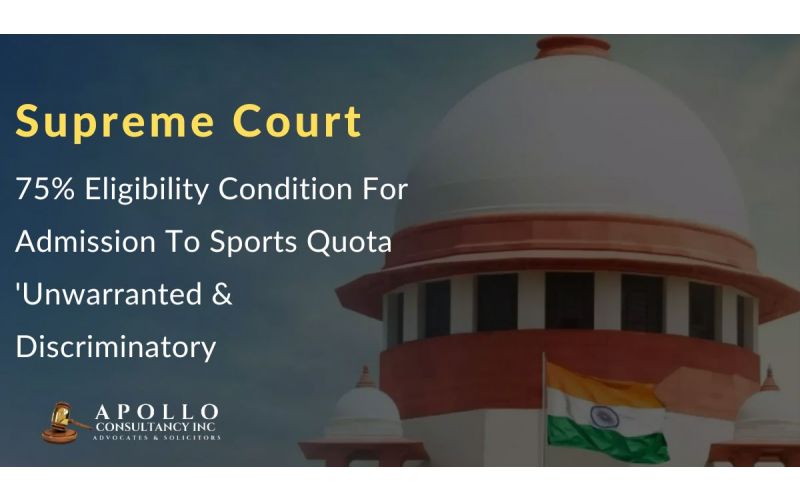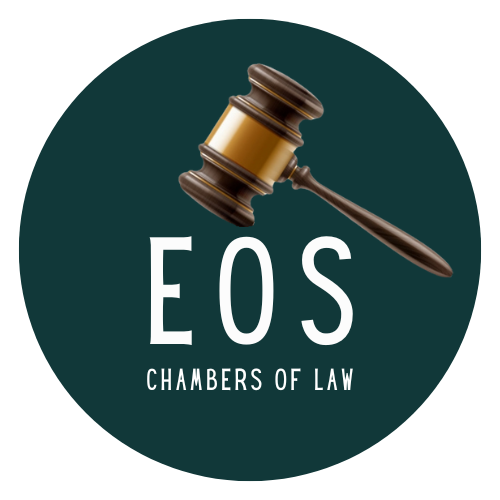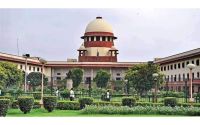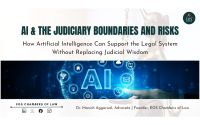CJI DY Chandrachud Cautions About Artificial Intelligence; S

CJI DY Chandrachud Cautions About Artificial Intelligence; Says It Can Make Biased Decisions Based On Societal Prejudices
Chief Justice of India D Y Chandrachud
recently spoke on how no technology is neutral and how it can reflect human values when deployed in the real world. The CJI spoke on how one must ponder the human and societal values that technology represents, especially the context in which they are deployed. “
This is because technology doesn’t develop in a social vacuum. They take place inside an intricate tapestry of societal realities and legal, economic and political structures
CJI DY Chandrachud, speaking at the 60th Convocation Ceremony of Indian Institute of Technology (IIT) Madras, explained how Artificial Intelligence, which has immense potential but can also be used to perpetuate discrimination and unfair treatment:
“A significant impact of AI is its potential to amplify discrimination and undermine the right to fair treatment. Many AI systems have been shown to exhibit biased decision making based on data inputs that reflect societal prejudices. For example, AI recruitment tools deployed by firms favoured men over women because the tools were trained on profile of successful employees who, for gendered reasons, happened to be predominantly male. In this, data driven systems can perpetuate biases and marginalise the social control mechanisms that govern human behaviour.
According to the Chief Justice, the real redemption of technology lies in enabling freedoms and human rights of every individual. Technology has the ability to make us resilient to future threats that loom over future freedoms, he said.
He also expressed concern about how AI has the potential to be misused to bullying, threatening and misleading:
Today Artificial Intelligence are the two words on everybody’s lips. AI is being deployed rapidly to enhance the efficiency of computer software and hardware. In a relatively short time, AI tools such as ChatGPT has shown that even computer can crack a joke, write codes or even draft legal memos. Even in the Supreme Court, we are using AI on a pilot basis for live transcriptions of court proceedings. The trepidations voiced by many about the advent of AI is an example of how new technologies do not exist in a vacuum. Always keep in mind what values AI represents and what affordances it creates. I have personally been fascinated with the AI image-generating software, which allows you to put in a written prompt and generate an image, but I am also cognisant of its potential misuse to create deep fakes, to mislead and to bully individuals.”
The Chief Justice spoke on the power of science and technology to attain human rights and liberty. According to him every incremental change in technology has the potential to transform the lives of individuals, bridge societal divides and secure justice. But new technology can also facilitate unintended behaviours, the CJI opined. In this context, he spoke on the threat of surveillance through technology:
“With the advent of emails you may never know that your email is being intercepted and this can now be done at an unprecedented scale. Thus, while electronic communication shows values of communication and collaboration they also create the possibility of mass surveillance of our most intimate details and ideas. Privacy, confidentiality, security, transparency and anonymity are some of the basic expectations people have from technology they use. Both technology and law have striven to secure this. We all want our messages to now be end-to-end encrypted and this shows how every new technology creates new affordances which in turn modify human behaviour and lead to new technology,’ he said.
Chief Justice Chandrachud, also spoke about how technology transformed the judicial system. It has facilitated access to justice and can also help keep citizens better informed:
“During the Covid-19 pandemic the Supreme Court introduced the virtual court system which till date allows litigants and lawyers from outside Delhi to appear before the Supreme Court. Courts across India held as many as 43 million hearings. These millions of hearings made us realise how Virtual Courts have helped female lawyers who otherwise faced difficulty in appearing in court due to the gendered demands of domestic work and caregiving. With VCs they could argue from their homes. VC also facilitated the live-streaming of Constitution bench proceedings, which has helped citizens stay informed about on-going cases. The values of video-conference extend beyond mere communication and collaboration to encompass inclusivity and access to justice.’ the CJI Explained.
The CJI also spoke on the interplay of law and technology in facilitating progress:
It is often said technology develops at a speed with which the law cannot keep up with. This may seem true in the heat of the moment, but if we take a step back, our history would be a testament to the fact that law and technological developments share a dialectic relationship. They speak to speak to one another constantly, each one pushing the other forward. At one point in time in history, ships were considered the pinnacle of modern technology but with every voyage came a risk of losing all your goods and human lives to the high seas. It was the law of corporate ownership and financing that allowed businesses to manage the risk of overseas voyages leading to first generation of entrepreneurs and venture capitalists. Later it was the rapid technological evolution of the industrial revolution that led to the development of labour law and patent law.
Post Categories
Featured Posts
Latest Posts
Latest Posts

Anti-Money Laundering AML Compliance Best Practices for Law Firms...
In today's globalized economy money laundering poses a significant threat to financial systems and institutions including law firms As facilitators of various financial transactions law firms are often targeted by money launderers seeking to legitimize illicit funds Anti-Money Laundering AML...

Punjab Haryana High Court Issues Guidelines To Check Unnecessary Arrests Non-Compliance Will Lead To...
The Punjab amp Haryana High Court has issued guidelines in compliance with the Supreme Court directions in Md Asfak Alam v State of Jharkhand amp Anr to ensure that police officers do not make unnecessary arrests and that Magistrates do...

Cheque Case Against Firm s Partner Can Be Quashed Only On Strong Evidence That...
The Supreme Court observed that a cheque case against a partner of the firm cannot be quashed under Section CrPC unless there is unimpeachable and incontrovertible evidence that he she did not have any concern with the issuance of cheques...

Eligibility Condition For Admission To Sports Quota Unwarranted Discriminatory...
The Supreme Court has held that the eligibility condition of minimum marks does not promote the object of introducing the sports quota and such criterion subverts the object and falls afoul of the equality clause in Article of...

Navigating Real Estate Challenges A Solicitor's Insight...
Introduction In the intricate world of real estate consumers often find themselves entangled in a web of complexities that demand legal acumen and guidance As a solicitor passionate about serving my clients I feel compelled to shed light on the...

Speak With Our
Get a Appointment

















